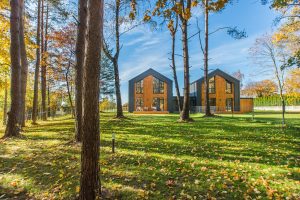
Whether you just laid new sod in the spring or in the fall, this winter will be its first, and special care should be taken to ensure it comes back healthy and green. Here are sod tips for the four common mistakes we see, and how to avoid them, so you are ready to play in the grass when spring arrives.
Sod Tip #1 – Over-mowing
Cutting your lawn too short stresses, and can even shock, the leaves of the sod. Grass, like other plants, rely on photosynthesis- that is, using the sun’s nutrients to grow. When the grass blades are broken, due to a dull mower, or when it is cut too short, it limits its ability to grow. This also puts the grass in more danger of becoming overgrown with weeds and attacked by insects and disease.
Keep your mower blades sharp (sharpen them once a year), and trim grass no shorter than ¼”. This helps the roots grow deeper in the fall and they’ll need less water going forward.
Sod Tip #2 – Over-watering
Over-watering creates its own monster, as grass roots don’t grow as deep to reach the nutrients they need. You need to water even less in the fall, allowing the grass to get much needed sun as it begins to go dormant. Let the grass roots grow deep into the earth for water, which will help them in times of drought and water restrictions.
Sod Tip #3 – Neglecting leaves
Leaves and pine needles can quickly cover the yard and it is easy to stay busy with life and let them lie. However, doing so can suffocate the grass and create an environment ripe for disease. The debris can trap moisture and make a barrier that stops precious sunlight from reaching your grass, killing it and leaving bald spots.
Sod Tip #4 – Neglecting fertilizer
Fall is the perfect time to fertilize as it nourishes the grass just in time for its winter dormancy. It’s important to use a fertilizer designed for the fall, and that it is applied when the roots are still growing. When spring arrives, your grass will have the nutrients it needs, both from the sun and fertilizer, and it will be healthy, strong, and green.
Be sure to follow instructions to prevent under- or over-fertilizing to prevent burning or limiting growth. Use a slow-release fertilizer with the right nitrogen levels for your grass type.
Caring for your sod doesn’t have to be hard, but using the right kind for your needs is important to keep it beautiful. Whether you are needing new sod, or support with sod care, contact Emerald Sod today to learn more about the best sod for Colorado, applications, and pricing.
